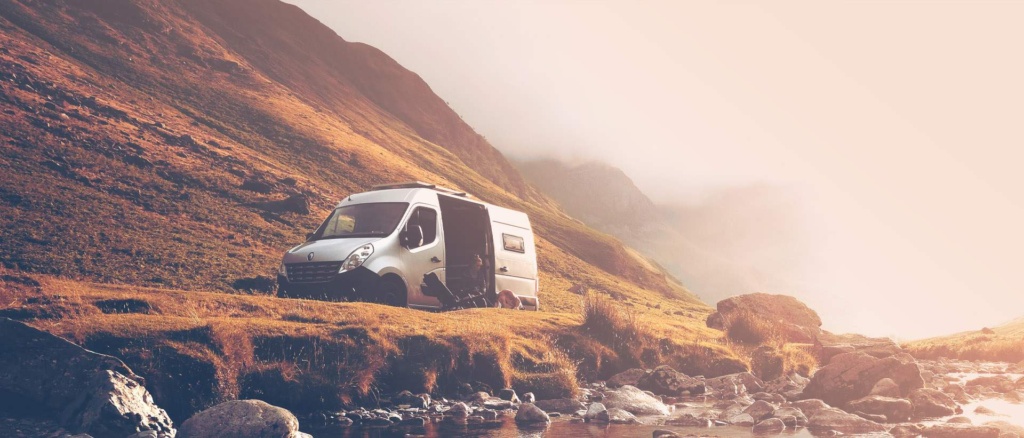
A camper van road trip is truly magical. The places that your vacation home on wheels can take you and the experiences that van life provides are unmatched. Growing up in the Midwest, I’d spend the summers of my youth exploring and paddling the diverse watersheds of Northern Wisconsin, Minnesota, and Michigan. This massive glacial installment, consisting of thousands of lakes and streams and thick forests that make up the Northwoods, is where I discovered the magic of wilderness travel. Migrating through the tall pines in a small boat, and traversing these seemingly undisturbed landscapes gave me an opportunity to disconnect and focus on loved ones around me. Because water always follows the lowest point in the land, I eventually found myself being drawn to the high terrain of the Mountain West, where I experienced a camper van road trip for the first time. I remember myself feeling so small as we explored the mountain roads, and coastal highways of Oregon, Washington, and Idaho in my friend’s Volkswagen Westfalia. I was immediately reminded of my time spent in the Northwoods as a child, cruising those lakes and streams, but obviously, the medium of travel was a bit different this time. I loved it. I was hooked. Home, for any given night, was where we parked our van.
As a newbie to this concept of being able to camp wherever, I was dumbfounded. My comfort level with camping at the time was confined to campgrounds and established backcountry campsites. It took me a while to understand where I could safely, happily, and legally park our van at night, and that is why I felt like writing this blog for you all. Especially if you are renting a van for the first time, I find this information essential because the best part about a camper van road trip is taking, excuse my cliche, the road less traveled, and venturing beyond established campgrounds.
So let’s get into it. Here is the list of the Top Things You Can Do on a Camper Van RoadTrip
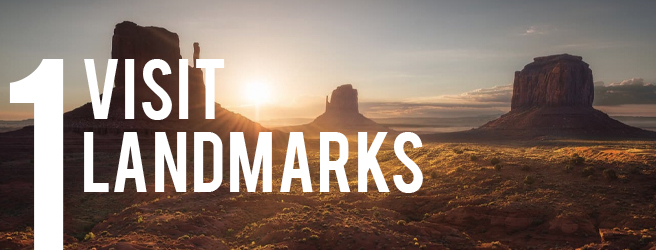
VISIT LANDMARKS – The easiest way to plan a camper van road trip is by first picking landmarks, such as national parks, state parks, natural features, or any other attractions. Using these locations, you can begin to develop an itinerary. Having a minute by minute itinerary for a camper van road trip is not essential, as spontaneity is one of the most wonderful things that camper vans offer, however, having a general idea of what you want to do with your week on wheels can save you valuable time when you are on your trip. The time that is meant to be spent enjoying, not planning. Once you have a grasp upon the major landmarks you want to hit on the trip, the next step is finding places to camp.
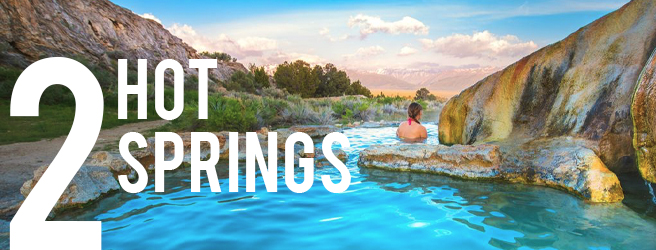
HOT SPRINGS – There’s nothing like a warm soak after a long day on the trail or on the road. Grab your koozie and cozy up with a cold beer. Hot springs litter the west, and can be found in many beautiful spots, and oftentimes there is camping near these places. Heck, plan a whole trip around visiting hot springs! My personal favorite is the Crab Cooker hot springs near Mammoth and Bishop, California!
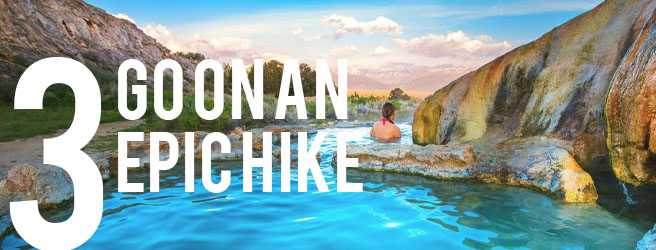
GO ON AN EPIC HIKE – If you’re spending the night in the woods, chances are you will be near some wonderful places to go hiking. Whether it’s a short stroll in the woods, or an all day summit mission, a camper van can get you to the trailhead. And when you get back from the hike, a cozy bed, snacks and refreshing drinks are right there waiting for you!
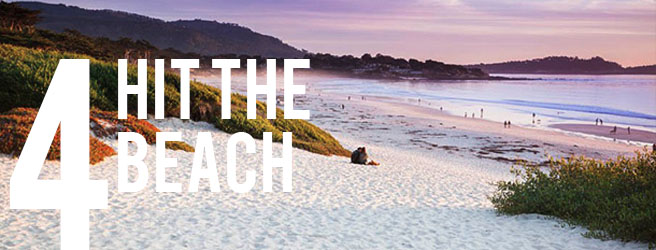
HIT THE BEACH – Choosing where to go on a camper van road trip is challenging, people are oftentimes left with the choice, mountains or ocean? The beach is never a bad bet. The weather is generally more predictable by the beach
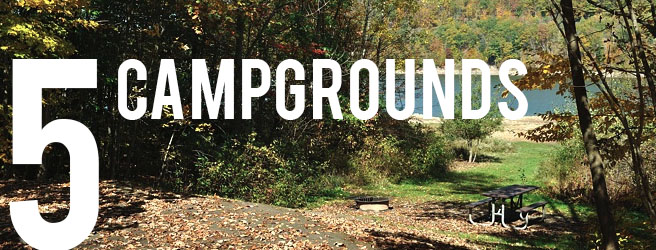
CAMPGROUNDS – Established campgrounds are a wonderful way to get comfortable with using your camper van. They may have some front country comforts, like restrooms and picnic tables, however it is still up to you to set up your van, cook dinner, and get comfortable outside. Oftentimes these campgrounds can be found in beautiful state parks, with established recreational opportunities like hiking, biking, and swimming. Additionally, there are many established campgrounds within the national forest all over the western United States and beyond. From river valleys in Utah, to the rainforests of Oregon, there really is something for every adventurous soul out there. I personally am a huge fan of these semi-backcountry establishments. Feeling like I am fully immersed in the wild, but with the comfort of some smooth dirt to sleep or park my van on, is certainly an asset. So nice of the government to provide us with these beautiful treasures! Oftentimes they are a little more off of the beaten path than state park campgrounds, but offer similar amenities and comfort. Furthermore, they can easily be navigated to by GPS since they are known locations. National forest campgrounds can be found by researching specific national forest websites (fs.usda.gov). There you can find resources about recreation in the area, and where these campgrounds are located. The national forest website also offers excellent information on the current status of campgrounds, road closures, fire bans, other pertinent advisories, and whether you may need a reservation or if they are first come first serve. That last part being said, that is the one downside to national forest campgrounds, or any campground for that matter, is that a reservation may be required, or you could show up and all of the campsites could be taken. This is why planning is essential, and having a plan B is always a great option. It is also imperative to note that at these locations, you will likely not have cell service.
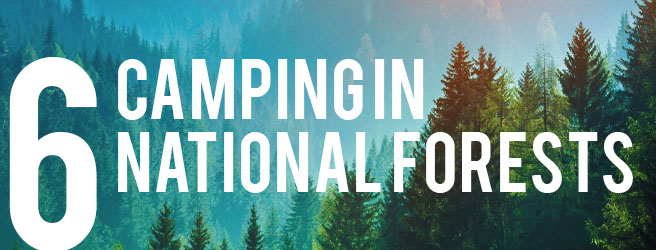
DISPERSED CAMPING IN NATIONAL FOREST – No other campgrounds near you in the national forest? Fear not! Enter dispersed camping. One beautiful thing about national forest is that in most places, you can disperse camp almost anywhere within its boundaries. There are hundreds and thousands of paved and unpaved national forest roads that can lead you to wonderful backcountry camping spots, or trailheads that allow camping. Oftentimes along the road in national forest, there will be pullouts where folks have very obviously camped in the past, and you should too! These spaces allow solitude, natural beauty, and the safety of knowing there is a road nearby if you need to evacuate or depart for any reason. And don’t worry, you’re not just stuck in the woods with no views of anything other than a tree or a squirrel. National forests are littered with awe inspiring, clean and clear alpine lakes, and asperous mountain peaks and monstrous river valleys. You are allowed to spend up to two weeks in any spot in the national forest, so it is a wonderful place to call home for a couple days or a couple weeks! I’ve spent many more nights than I can count roaming around the national forests of Wisconsin, Michigan, Montana, Idaho, Oregon, and Washington. My personal favorites are the Mt. Hood National Forest in Oregon, and the Shoshone National Forest in Wyoming. The abundance of hiking and fishing in these areas is remarkable. And yes, you can get to all of these places in your USA CamperVan.
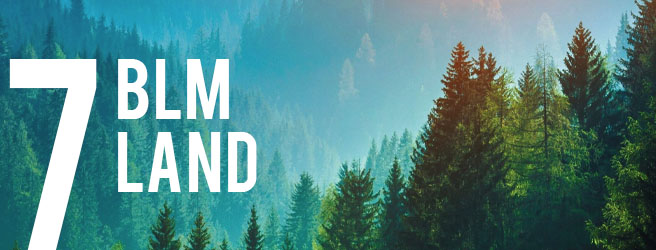
BLM LAND – In addition to national forest land, another swath of public land you can happily find yourself a place to camp is on Bureau of Land Management land, or BLM land as folks call it. BLM land and national forest land have a lot in common. BLM land has both established campgrounds and dispersed camping available. There are many maps available that detail where BLM land is, where you can dispersed camp, and where there are established campgrounds. The first time I spent on BLM land was absolutely incredible. I explored in any direction that I chose, and any durable surface became our home for the night.
Dispersed camping in the national forest and BLM land in a camper van also comes with a lot of responsibility. A primary goal is to protect the public land and ensure that it is left in the same condition so everyone has the opportunity to experience the backcountry in the same way, and have access to undisturbed landscapes.
Here at USA CamperVan, we support and are partnered with Leave No Trace, an educational institution that promotes safe, non-destructive wilderness travel. By following the seven Leave No Trace principles, you can have both an amazing experience in the wilderness and ensure that land remains as it is, wilderness. For plants, animals and people alike, practicing good environmental stewardship is fundamental to a fun and successful camper van journey.
This is just a shortlist of things you can do on your next camper van adventure. Have any further questions, thoughts, inspirations? Leave a comment, or drop us a line. We are here, both with a van in hand, but with travel experience galore – we love to geek out on trip planning!
